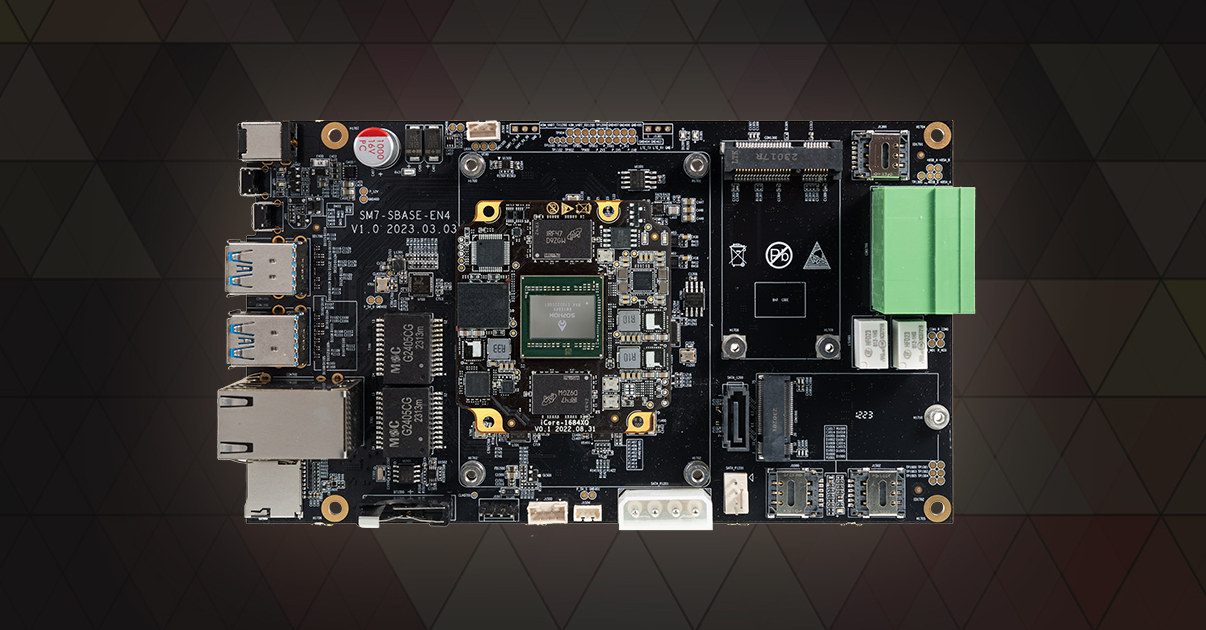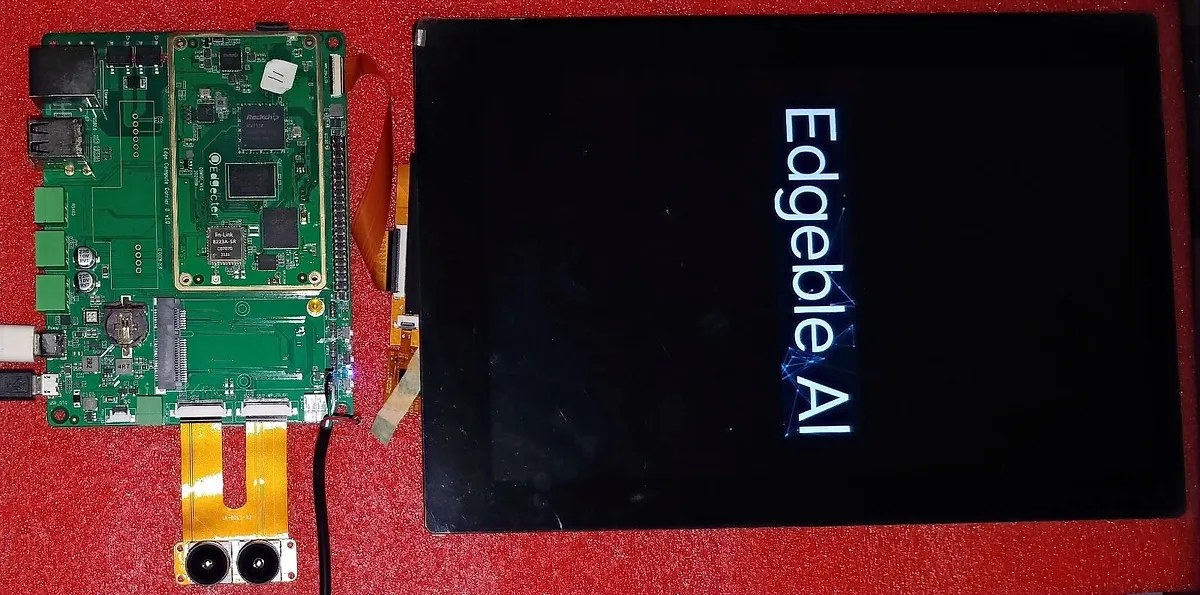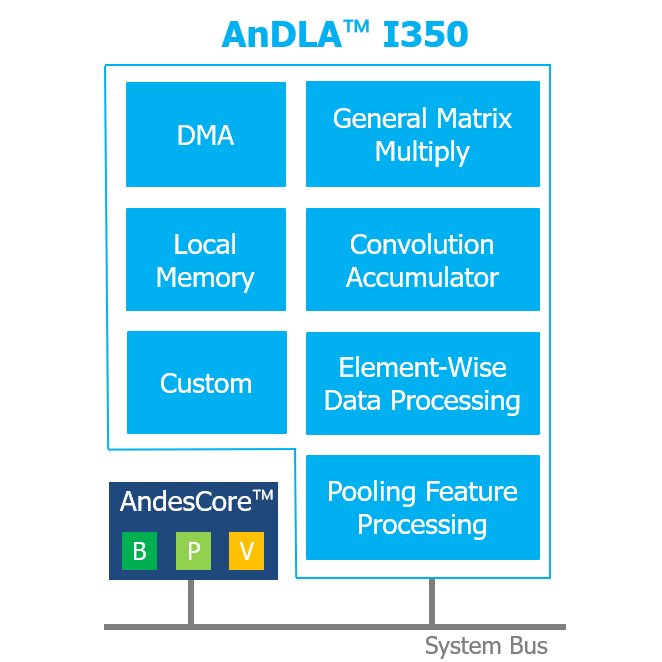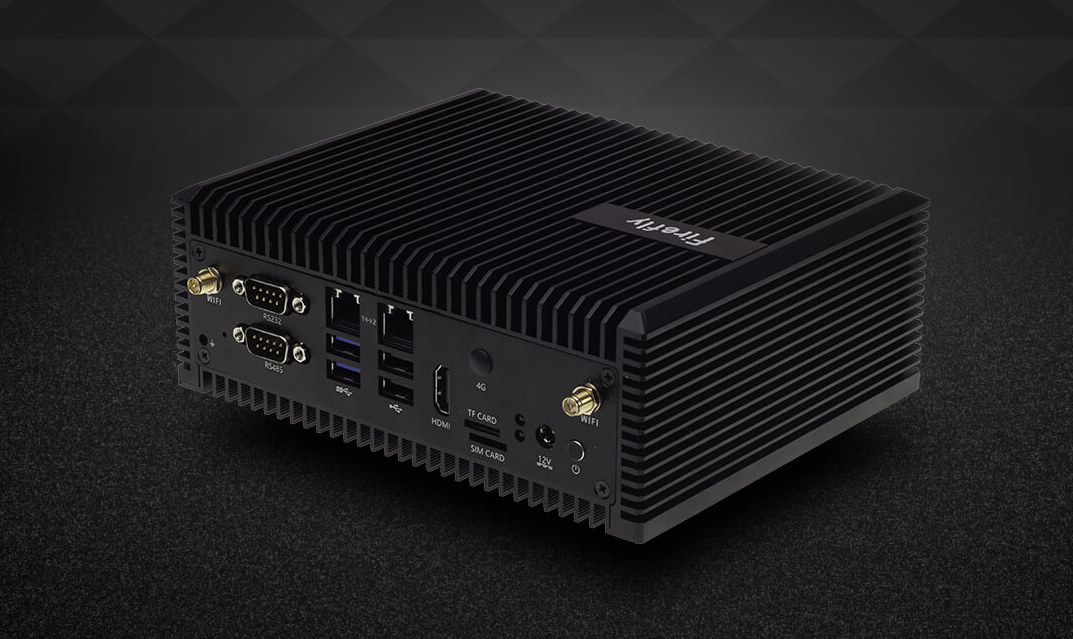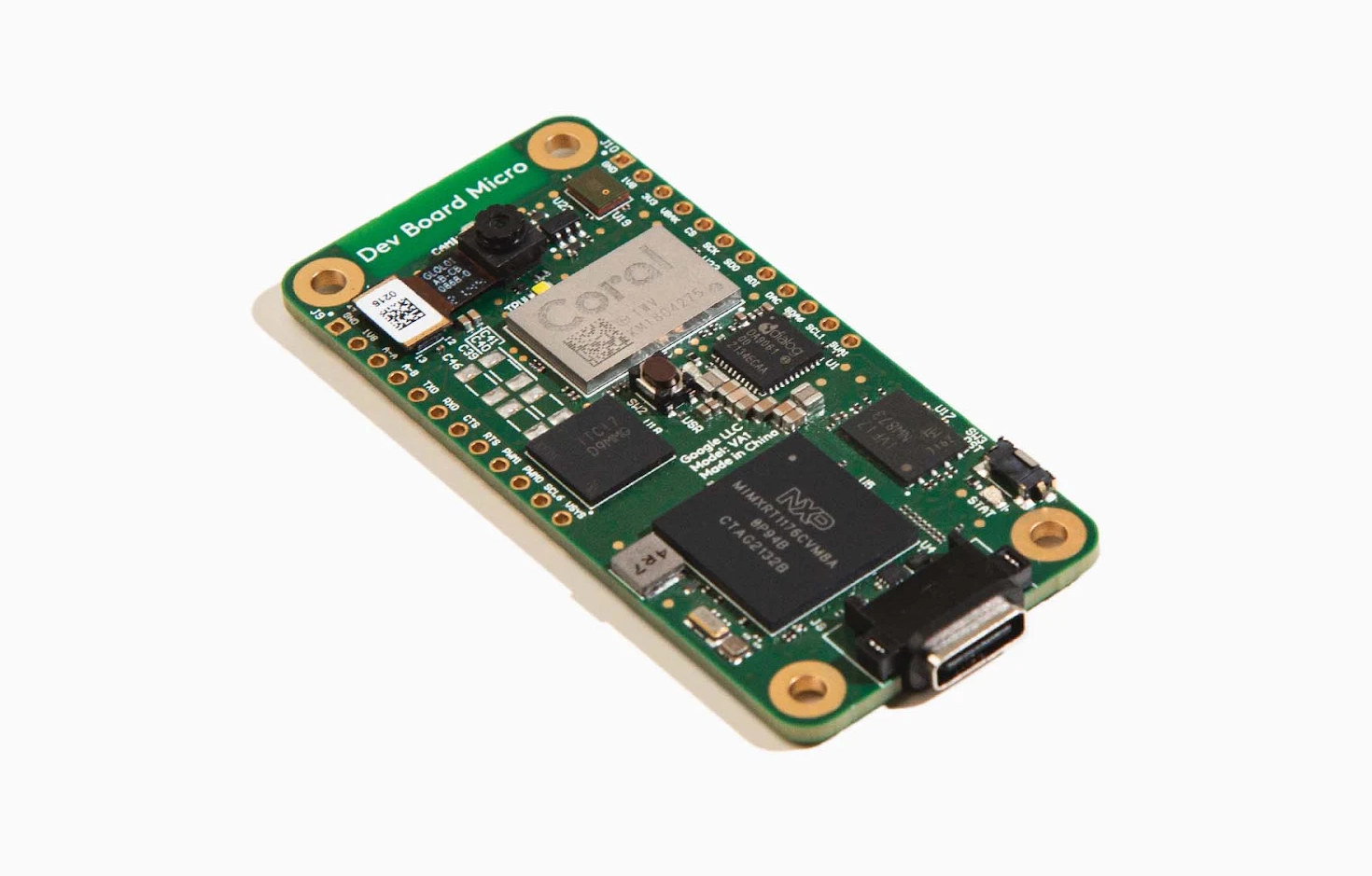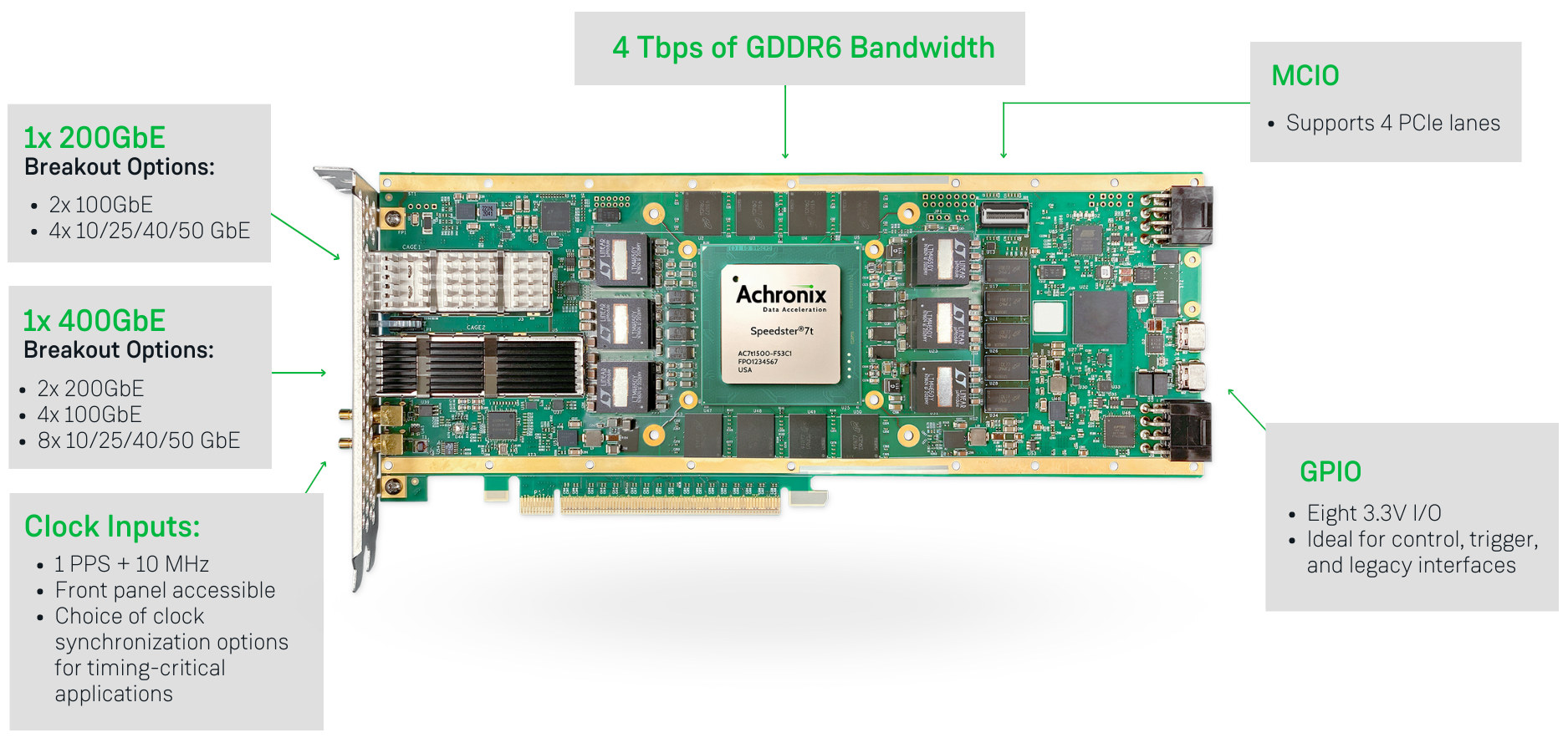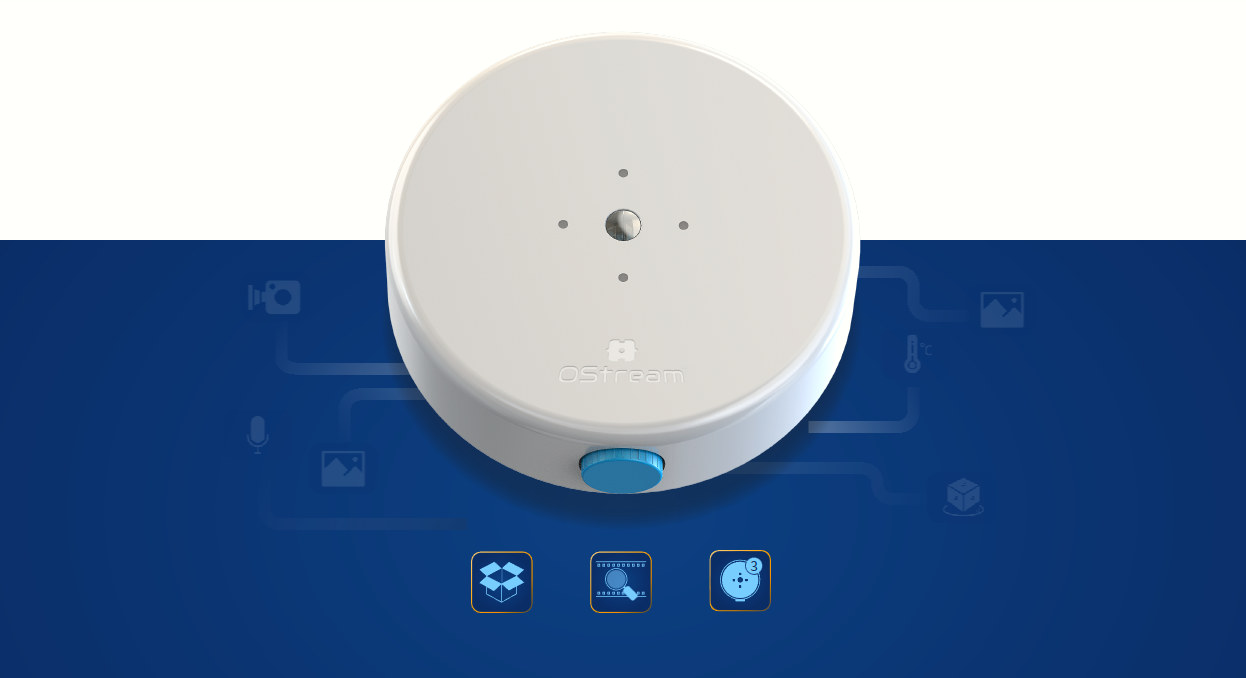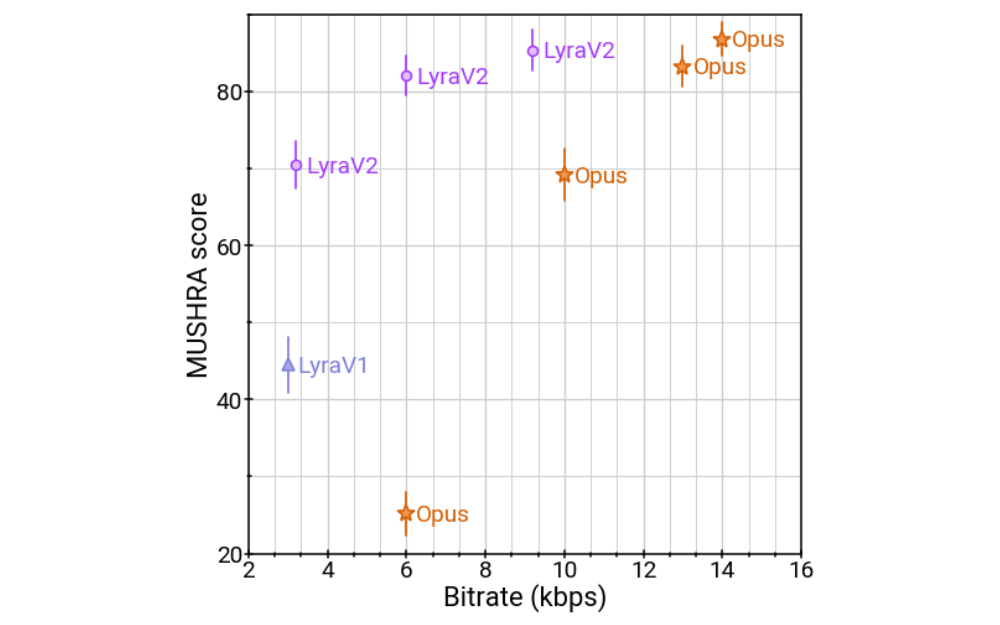Firefly AIO-1684XQ is a motherboard based on SOPHGO SOPHON BM1684X octa-core Cortex-A53 AI SoC delivering up to 32TOPS for AI inference, and designed for computer vision applications and video analytics. The headless machine vision board is equipped with 16GB RAM, 64GB eMMC flash, and 128MB SPI flash, and comes with a SATA 3.0 port, dual Gigabit Ethernet, optional 4G LTE or 5G modules, four USB 3.0 ports, and a terminal block with two RS485 interface, two relay outputs, and a few GPIOs. Firefly AIO-1684XQ specifications: SoC – SOPHGO SOPHON BM1684X CPU – Octa-core Arm Cortex-A53 processor @ up to 2.3 GHz TPU – Up to 32TOPS (INT8), 16 TFLOPS (FP16/BF16), 2 TFLOPS (FP32) VPU Up to 32-channel H.265/H.264 1080p25 video decoding Up to 32-channel 1080p25 HD video processing (decoding + AI analysis) Up to 12-channel H.265/H.264 1080p25fps video encoding System Memory – 16GB LPDDR4x Storage 64GB eMMC flash 128MB SPI […]
Edgeble AI Neural Compute Module 2 (Neu2) follows 96Boards SoM form factor
Edgeble AI’s Neurable Compute Module 2, or Neu2 for shorts, is a system-on-module for computer vision applications based on the Rockchip RV1126 quad-core Cortex-A7 camera processor that follows the 96Boards SoM form factor. I first found the Neu2 and Neu6 (Rockchip RK3588) in the release log for the Linux 6.3 kernel, but at the time I found there was not enough information about those. The specifications for the Neu6 are still wrong (e.g. “64-bit processor with 4x Cortex-A7 core”) at the time of writing, so I’ll check the Neu2 system-on-module and its industrial version – the Neu2K based on RK1126K – for which we have more details. Edgeble Neu2 SoM specifications: SoC – Rockchip RV1126/RV1126K with CPU – Quad-core Arm Cortex-A7 @ 1.5GHz, RISC-V MCU @ 200MHz; (14nm SMIC process) GPU – 2D graphics engine NPU – 2 TOPS with INT8/INT16 VPU 4K H.264/H.265 video encoder up to 3840 x […]
AndesAIRE AnDLA I350 AI/ML IP block is configurable from 64 GOPS to 8TOPS for Edge AI SoCs
Andes Technology has just announced the AndesAIRE product line, where AndesAIRE stands for Andes AI Runs Everywhere, comprised of the AndesAIRE AnDLA I350 (Andes Deep Learning Accelerator) AI/ML hardware accelerator intellectual property (IP) and the AndesAIRE NN SDK with neural network software tools and runtimes. AndesAIRE AnDLA I350 AnDLA I350 specifications: Configurable MACs from 32 to 4096 (INT8) Maximum performance – 8 TOPS at 1GHz Configurable local memory – 16KB to 4MB Multi-dimension DMA Four 64-bit AXI bus interfaces NN type – CNN inference NN models Image and Video: AlexNet, VGG-16/19, MobileNet-v1/v2/v3, ResNet-8/50, Tiny YOLO v1/v2, YOLO v1/v2/v3/v4/v5, SSD MobileNet v1/v2, Inception v2, EfficientNet-lite, MobileFaceNet, BlazeNet Speech/Voice and audio: LSTM, RNN, GRU Operators: Conv2d, depthwise convolution, pointwise convolution, transpose convolution, dilated convolution, element-wise (add, sub, mul), fully-connected, activation (ReLU, leaky ReLU, sigmoid, Tanh, ReLU6, SiLU), pooling (max, ave), upsample, concatenation, batch normalization, channel padding Operator fusion NHWC data format The IP […]
SOPHON BM1684/BM1684X Edge AI computer delivers up to 32 TOPS, decodes up to 32 Full HD videos simultaneously
Firefly EC-A1684JD4 FD and EC-A1684XJD4 FD are nearly identical Edge AI embedded computers based on respectively SOPHON BM1684 and BM1684X Arm AI SoC delivering up to 32 TOPS of AI inference, and capable of decoding up to 32 H.265/H.264 Full HD videos simultaneously for video analytics applications. The BM1684(X) SoCs are equipped with eight Cortex-A53 cores clocked at 2.3 GHz to run Linux, and the systems come with up to 16GB RAM, 128GB flash, two Gigabit Ethernet ports to receive the video streams, one HDMI output up to 1080p30 for monitoring, as well as RS232 and RS485 DB9 connectors, and a few USB ports. Firefly EC-A1684JD4 FD and EC-A1684XJD4 FD specifications: SoC – SOPHGO SOPHON BM1684/BM1684X CPU – Octa-core Arm Cortex-A53 processor @ up to 2.3GHz TPU BM1684 64 NPU arithmetic units with each NPU containing 16 EU arithmetic units, or 1,024 EU in total Up to 17.6 TOPS (INT8), […]
Coral Dev Board Micro combines NXP i.MX RT1176 MCU with Edge TPU in Pi Zero form factor
Coral Dev Board Micro is the latest iteration of Google’s Edge AI devkit with an NXP i.MX RT1176 Cortex-M7/M4 crossover processor/microcontroller coupled with the company’s 4 TOPS Edge TPU, a camera, and a microphone in a board that’s about the size of a Raspberry Pi Zero SBC. The new board follows the original NXP i.MX 8M-based Coral Dev board that was introduced in 2019, and Coral Dev Board mini based on MediaTek MT8167S processor launched in 2020, and keeps with the trend of providing more compact solutions with lower-end host processors for edge AI. Coral Dev Board Micro specifications: MCU – NXP i.MX RT1176 processor with an Arm Cortex-M7 core @ up to 1 GHz, Cortex-M4 core up to 400 MHz, 2MB internal SRAM, 2D graphics accelerators; System Memory – 512 Mbit (64 MB) RAM Storage – 1 Gbit (128 MB) flash memory ML accelerator – Coral Edge TPU coprocessor […]
Achronix Speedster7t AC7t1500 FPGA is now available for high-bandwidth applications
Achronix Semiconductor has recently announced the general availability of the Speedster7t AC7t1500 FPGA designed for networking, storage, and compute (AI/ML) acceleration applications. The 7nm Speedster7t FPGA family offers PCIe Gen5 ports and GDRR6 and DDR5/DDR4 memory interfaces, delivers up to 400 Gbps on the Ethernet ports, and includes a 2D network on chip (2D NoC) that can handle 20 Tbps of total bandwidth. Achronix Speedster7t highlights: Two-dimensional network on chip (2D NoC) enabling high bandwidth data flow throughout and between the FPGA fabric and hard I/O and memory controllers and interfaces MLP (Machine Learning Processors) blocks with arrays of multipliers, adder trees, accumulators, and support for both fixed and floating-point operations, including direct support for Tensorflow’s bfloat16 format and block floating-point (BFP) format. Multiple PCIe Gen5 ports High-speed SerDes transceivers, supporting 112 Gbps PAM4 and 56 Gbps PAM4/NRZ modulation, as well as lower data rates Hard Ethernet MACs that support […]
Arducam OCam AI camera adds context to video streams in real-time with the PhysicO platform
Arducam OCam, whose name stands for Object Camera, is an AI camera with 3 TOPS of AI performance and designed to work with OStream‘s PhysicO Edge AI media platform that adds context to MP4 video streams in real-time. The camera supports resolutions from QVGA to 2K, takes USB or PoE power, comes with a drag-and-drop AI pipeline for easy programming/configuration, and is also compatible with common AI tools such as TensorFlow, PyTorch, Edge Impulse, and others. Arducam OCam specifications: Resolution – QVGA up to 2K Frame Rate – Up to 60 fps FoV – 80° Audio – Dual beamforming AI processing power – Up to 3 TOPS Power Supply 5V via USB PoE Power Consumption – Up to 5 Watts Dimensions – 10 cm Φ x 3 cm Weight – 400 grams As I understand it, the AI pipeline – named ObjectAgent – runs on the camera itself, and adds […]
Lyra V2 open-source audio codec gets faster, higher quality and compatible with more platforms
Lyra V2 is an update to the open-source Lyra audio codec introduced last year by Google, with a new architecture that offers scalable bitrate capabilities, better performance, higher quality audio, and works on more platforms. Under the hood, Lyra V2 is based on an end-to-end neural audio codec called SoundStream with a “residual vector quantizer” (RVQ) sitting before and after the transmission channel, and that can change the audio bitrate at any time by selecting the number of quantizers to use. Three bitrates are supported: 3.2 kps, 6 kbps, and 9.2 kbps. Lyra V2 leverages artificial intelligence, and a TensorFlow Lite model enables it to run on Android phones, Linux, as well as Mac and Windows although support for the latter two is experimental. iOS and other embedded platforms are not supported at this time, but this may change in the future. It gets more interesting once we start to […]


